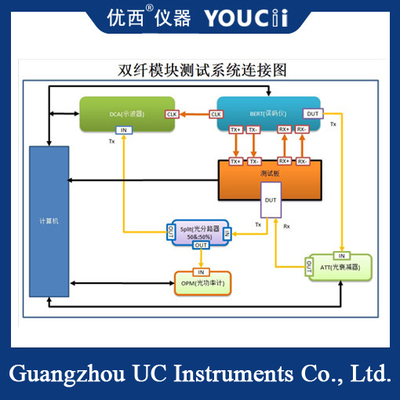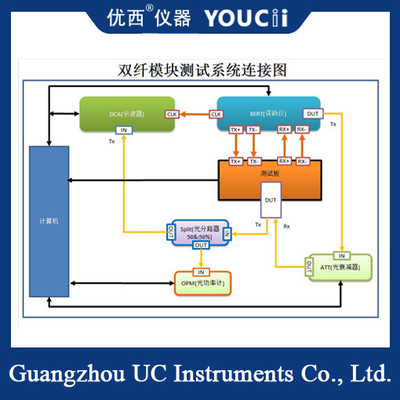Module Auto Test System OLT/SFP/SFP+/XFP/ONU Speed Of 10G Or Less
This test system can test 10G and below speed (such as 10G, 2.5G, 1.5g, 622M, 155M, etc.) conventional modules, such as OLT, SFP, SFP+, XFP, ONU and so on.
The test system supports local ACCESS database and remote SQL database, all types of test parameters are saved in the database, at the same time each test data is also saved in the database, and provides data query function.
The test system belongs to one-button operation, the operator does not need too much training to operate the software for automated testing, without professional test technicians, can effectively solve the problem of large liquidity tester, production training can not keep up with the problem. The tester only needs to select the channel to read the serial number or input the serial number, and then click "Start test" to complete the test. The software displays the test results of each module and the total test results, and the tester can see the results.
Extinction Ratio
Extinction ratio was actually measured by the ophthalmograph and measured by oscilloscope.
2.1.2. Mask Margin of eye image
Select the filter to be loaded, the correct template, load the template, set the bit error rate (generally 10-12), and wait for a certain number of waveforms (such as 500), test the eye margin, and use the oscilloscope measurement.
2.1.3 Rise Time & Fall Time Rise time & fall time
Rising edge time: the length of time from when the rising edge reaches 20% of the final amplitude to 80% of the final amplitude; Falling edge time: The length of time from when the falling edge reaches 80% of the final amplitude to 20% of the final amplitude, measured using an oscilloscope.
Cross Point of eye graph
Oscilloscope is used to measure the percentage relationship between the amplitude at the intersection of rising edge and falling edge and the amplitude of logical 1 level and logical 0 level in the eye map.
Peak Jitter and root mean square Jitter Jitter P-P & Jitter RMS
Peak jitter: The peak value of jitter in oscilloscope is defined as the peak value of the time variation of the rising and falling edges of the eye map. Root-mean-square jitter: The root-mean-square value of jitter in oscilloscope is defined as the root-mean-square value of the time variation of the rising and falling edges of the eye map, both of which are measured by oscilloscope.
Average optical Power
The average transmitted optical power is the optical energy emitted by the module in unit time, which is measured by optical power meter or oscilloscope.
Power Off optical power
The optical power emitted by the module in the off state shall be measured by optical power meter or oscilloscope.


 Your message must be between 20-3,000 characters!
Your message must be between 20-3,000 characters! Please check your E-mail!
Please check your E-mail!  Your message must be between 20-3,000 characters!
Your message must be between 20-3,000 characters! Please check your E-mail!
Please check your E-mail! 

